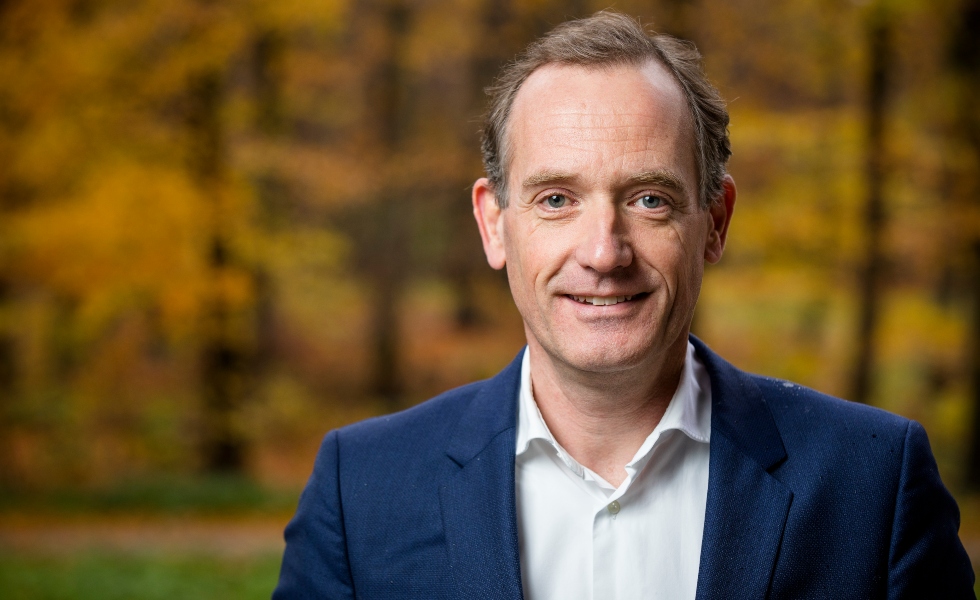Stephan Langen: Biodiversity loss and climate crisis are a human affair
Stephan Langen: Biodiversity loss and climate crisis are a human affair

This column was originally written in Dutch. This is an English translation.
By Stephan Langen, Head of Portfolio Management at ASN Impact Investors
People in emerging countries occupy a remarkable position within the global ecological crises. On the one hand they often depend on nature for their income, on the other hand they live in the most vulnerable areas on earth. Microfinance is an excellent investment category to include the social aspect of climate and biodiversity in your portfolio.
I recently had the opportunity to participate in a panel discussion at the Financial Investigator seminar 'Biodiversity & Climate'. I noticed that many financial parties are busy identifying the risks of climate change and biodiversity loss in their portfolios. That's great, because insight into the possible losses is a strong source of inspiration for actions to mitigate those risks.
Reducing losses is not enough
Yet it is only a beginning. That was my message at the seminar. Reducing losses is not enough, because lower biodiversity loss is still a loss. My call was therefore to restore as much biodiversity as possible and to protect it wherever necessary.
What was less discussed during the seminar, but which is at least as important, is the social aspect of the climate and biodiversity crises. And that brings me to the following.
Microfinance and impact investors
Impact investors with a long track record have traditionally invested in microfinance. For those unfamiliar with microfinance: these are usually loans to and participations in Microfinance Institutions (MFIs). These are financial institutions in mainly emerging markets that provide small loans to local entrepreneurs to build their own lives.
Imagine that you provide a loan to an MFI, which then uses this loan to lend small amounts to many thousands of customers. If you then build up a portfolio of dozens of MFIs, the risk of non-performing loans is enormously spread over hundreds of thousands or even millions of end customers. The funds that invest in MFIs are generally spread over many countries, which further mitigates the risks.
Spectacularly low default
Well-selected MFIs provide loans at an affordable interest rate and have had a spectacularly low default rate for decades. Even during and after corona, few loans had to be written off. This was partly due to the experience of the lenders, who often work side by side to find solutions to guide their customers through a crisis. Their patience, combined with the local resilience of their customers, cushions the risks.
The returns achieved with the loans are also stable. This makes microfinance a nice addition to an impact portfolio of institutional investors, where the optimal portfolio can be improved from a risk and return perspective.
Financial inclusion in vulnerable biotopes
Why am I bringing this up now? Microfinance is about financial inclusion. Through small loans, people who do not have access to the financial system still have the opportunity to build a life. Their financial resilience is increased.
Many of the countries where microfinance is provided are located in a broad band around the equator. This is precisely the area where the most important, but unfortunately also the most vulnerable, habitats in the world are located. These biotopes have enormous value for ecosystem services on which economic activity is based. It is a good example of the interaction between investing in people and biodiversity.
Interfaces with biodiversity
Because financial inclusion has interfaces with biodiversity and climate. Those who have a better income no longer have to depend on poaching or firewood. Those who can stockpile, purchase seeds and have access to more information improve their farming methods.
And those who have more resources will also be better able to adapt to the consequences of weather extremes or prevent loss of biodiversity. You can bet that in the countries we are talking about, people understand and feel very well how dependent the economy is on the ecosystem services that nature offers.
Supplement to a balanced portfolio
Viewed in this way, microcredit is a coin with only good sides. At this point it is also relevant to note that it is an investment with a return that is not affected by the issues of the day on the stock markets. So from an asset allocation point of view, it is a nice addition to a balanced portfolio.
For those who have completed the inventory of biodiversity risks and are looking for positive impact, it almost seems like low-hanging fruit to me.
Stephan Langen is Head of Portfolio Management at ASN Impact Investors. The information in this column is not intended as professional investment advice or as a recommendation to make certain investments.
